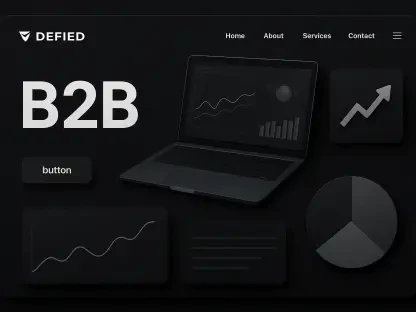In today’s retail landscape, every in-store interaction presents an opportunity to gather valuable customer information that can assist retailers in providing better shopping experiences, building stronger relationships, and driving growth. This valuable data can be utilized effectively by using customer metafields in the point of sale (POS) systems. The power of customer metafields is now available on Shopify POS, allowing retailers to create more personalized, memorable shopping experiences that keep customers returning.
Customer metafields are customizable data fields that enable businesses to capture and display crucial details about their customers, such as sizing preferences, birth dates, loyalty tier status, and shopping habits. This innovation allows any business, such as an apparel brand tracking T-shirt sizes, a shoe store recording fit preferences, or a home decor retailer noting design consultation details, to leverage customer metafields. By incorporating these data fields, retailers can not only enhance customer satisfaction but also encourage repeat purchases and improve clienteling. This article will delve into how customer metafields work in Shopify POS and how they can help your business better serve customers and drive growth today.
1. What Are Customer Metafields?
Customer metafields in Shopify are custom fields that capture additional information about buyers, extending beyond the usual name, address, and email details. By using metafields, retailers can gather customer attributes that matter most to their business in an organized manner. In a retail store setting, customer metafields enable in-store staff to contribute to customer data collection, with fields including birthdays, loyalty program data, customer preferences, and tax IDs.
The support for varying content type formats ensures the captured data remains consistent and structured. Examples of content types include the Date and Time format for capturing important dates like birthdays or anniversaries, the True or False format for collecting information such as loyalty program membership status, and text lists for creating drop-down options of set product categories. By providing structured data for staff to assign appropriate customer attributes, metafields eliminate the friction of typing full lines of text, reducing the risk of errors or typos and ensuring the information can be leveraged at scale.
This structured approach allows staff to collect essential details quickly and efficiently with just a few taps, contributing to consistent datasets that can fuel personalized marketing campaigns and offers. With this level of detailed customer information, businesses can create effective marketing strategies and deliver personalized experiences, leading to higher customer satisfaction and increased loyalty.
2. Delivering Personalized Customer Experiences
Customer metafields enable retailers to store unique information about individual customers, such as preferences, past purchases, or special occasions like birthdays and anniversaries. This data can be used by sales associates to provide a tailored shopping experience, offering personalized product recommendations or extending birthday discounts. For instance, a boutique could track customer clothing sizes, favorite brands, and preferred styles using metafields, allowing associates to make curated suggestions and personalize the shopping journey.
This enhanced level of personalization translates into higher customer satisfaction and fosters repeat purchases. Imagine a scenario where a customer walks into your store and is greeted with product recommendations that align with their past buying behavior or receives a birthday greeting with a special discount. These personalized touches enhance the shopping experience, making customers feel valued and appreciated.
Moreover, maintaining a detailed record of customer preferences and purchases enables sales associates to anticipate needs and provide timely recommendations. This approach not only drives immediate sales but also builds long-lasting relationships with customers, ensuring they return to your store for future purchases. By leveraging customer metafields, retailers can offer an in-store experience that resonates with customers on a personal level, ultimately driving loyalty and growth.
3. Integrating Loyalty Programs
Integrating loyalty programs with Shopify POS using customer metafields allows retailers to store and manage loyalty points, membership tiers, and rewards seamlessly. Sales associates can quickly access and update a customer’s loyalty status during checkout, ensuring customers never miss out on earning points or redeeming rewards. For example, a skincare business might use metafields to track customer purchases of moisturizer refills, automatically applying a discount for a free refill after every 10th purchase and displaying it directly on the POS.
This seamless integration enhances the customer experience, providing real-time updates and recognition of loyal customers. The ease of viewing and updating loyalty information at the checkout boosts customer satisfaction, making them feel valued and encouraging continued patronage. Additionally, by integrating loyalty programs into the POS system, retailers can streamline their operations, reducing the complexity and potential errors associated with manual tracking.
The ability to manage loyalty program data efficiently also allows retailers to design strategic loyalty initiatives, such as exclusive offers for members or tier-based rewards. This targeted approach ensures that loyalty programs remain engaging and relevant, further boosting customer retention and satisfaction. By utilizing customer metafields to integrate loyalty programs, retailers can create a seamless and rewarding experience for their customers, driving long-term loyalty and business growth.
4. Powering Customer Segmentation
Customer metafields serve as a powerful tool for customer segmentation, enabling retailers to classify their customer base into various segments based on specific attributes. This segmentation allows businesses to tailor their marketing strategies effectively. For instance, in-store staff might offer enhanced services to VIP customers or apply exclusive discounts for customers shopping during their birthday month. A pet store could categorize customers based on the type of pet they own, such as “Dog” or “Cat,” allowing marketing teams to send targeted email campaigns with relevant products.
Segmenting customers based on metafields facilitates personalized marketing efforts that resonate with each customer group, increasing engagement and conversion rates. By understanding the unique needs and preferences of different customer segments, retailers can craft marketing messages and promotions that are more likely to appeal to each group. This targeted approach not only drives sales but also builds stronger connections with customers, fostering loyalty and advocacy.
Additionally, customer segmentation using metafields enables retailers to identify and prioritize high-value customers. By recognizing and rewarding these customers with exclusive offers or personalized services, businesses can enhance their shopping experience, encouraging repeat purchases and long-term loyalty. Leveraging customer metafields for segmentation empowers retailers to create more effective marketing strategies, driving growth and customer satisfaction.
5. Staying Compliant
Customer metafields are also instrumental in ensuring compliance with various legal and regulatory requirements. Retailers can use metafields to store essential compliance-related information, such as a customer’s Tax ID or VAT number, directly within their profile. This structured data storage makes it easier to manage and access critical compliance information, ensuring adherence to relevant laws and regulations. For instance, a business that sells to other businesses might use the “Number” content type in metafields to store each customer’s Tax ID, streamlining invoicing and tax exemption processes.
Staying compliant is crucial for maintaining customer trust and avoiding potential legal issues. By using customer metafields to store compliance-related data efficiently, retailers can ensure they meet all regulatory requirements while maintaining organized and accessible records. This proactive approach to compliance not only safeguards the business but also enhances customer confidence in the retailer’s operations.
Moreover, having structured compliance data readily available allows retailers to respond quickly to audits or regulatory inquiries, reducing the time and effort required to gather necessary information. This efficiency minimizes disruptions to business operations and ensures a smooth compliance process. By leveraging customer metafields for compliance purposes, retailers can maintain a high standard of regulatory adherence, fostering trust and credibility with their customers and stakeholders.
6. Get Started with Customer Metafields in Shopify POS
The strategies outlined above are just the beginning. With the ability to display and capture additional customer information directly in POS, retailers and their staff can improve clienteling and operational efficiency while driving more repeat purchases. As customer expectations continue to evolve, leveraging tools like customer metafields on Shopify POS ensures you stay ahead of the curve, offering an in-store experience that is both seamless and deeply personalized.
Retailers can start using customer metafields in Shopify POS to gain deeper insights into their customers. If you’re already using Shopify, setting up customer metafields is straightforward. You can create and configure them in your Shopify admin and “pin” the desired metafields to appear in POS. This setup enables retailers to capture and utilize customer data effectively, enhancing the overall shopping experience.
By incorporating customer metafields into your POS system, you can transform your in-store operations and provide a superior shopping experience. This innovation not only improves customer satisfaction and loyalty but also positions your business for long-term growth. Start using customer metafields in Shopify POS today and unlock the full potential of personalized, data-driven retailing.
7. Customer Metafields FAQ
How Do I Set Up Customer Metafields in Shopify POS?
If you already use Shopify POS, you can create and configure customer metafields in the Shopify admin. Once you’ve created your metafields, you can “pin” the metafields you wish to display in POS. Get more details on setup in the Help Center.
How Do I Add and Edit Customer Metafields for In-Store Customers in Shopify POS?
In today’s retail environment, each in-store interaction offers an opportunity to collect essential customer data, aiding retailers in enhancing shopping experiences, forging stronger relationships, and promoting growth. This data can be effectively utilized via customer metafields in point of sale (POS) systems. With Shopify POS, retailers can now harness the power of customer metafields to create personalized, memorable shopping experiences that encourage repeat visits.
Customer metafields are customizable data fields that enable businesses to record and display critical customer information such as sizing preferences, birthdates, loyalty tier status, and shopping habits. This innovation benefits various businesses, like an apparel brand tracking T-shirt sizes, a shoe store logging fit preferences, or a home decor retailer recording design consultation details. By integrating these data fields, retailers can significantly boost customer satisfaction, drive repeat purchases, and improve clienteling efforts. This article explores how customer metafields function in Shopify POS and demonstrates how they can help your business provide better service and drive growth.









